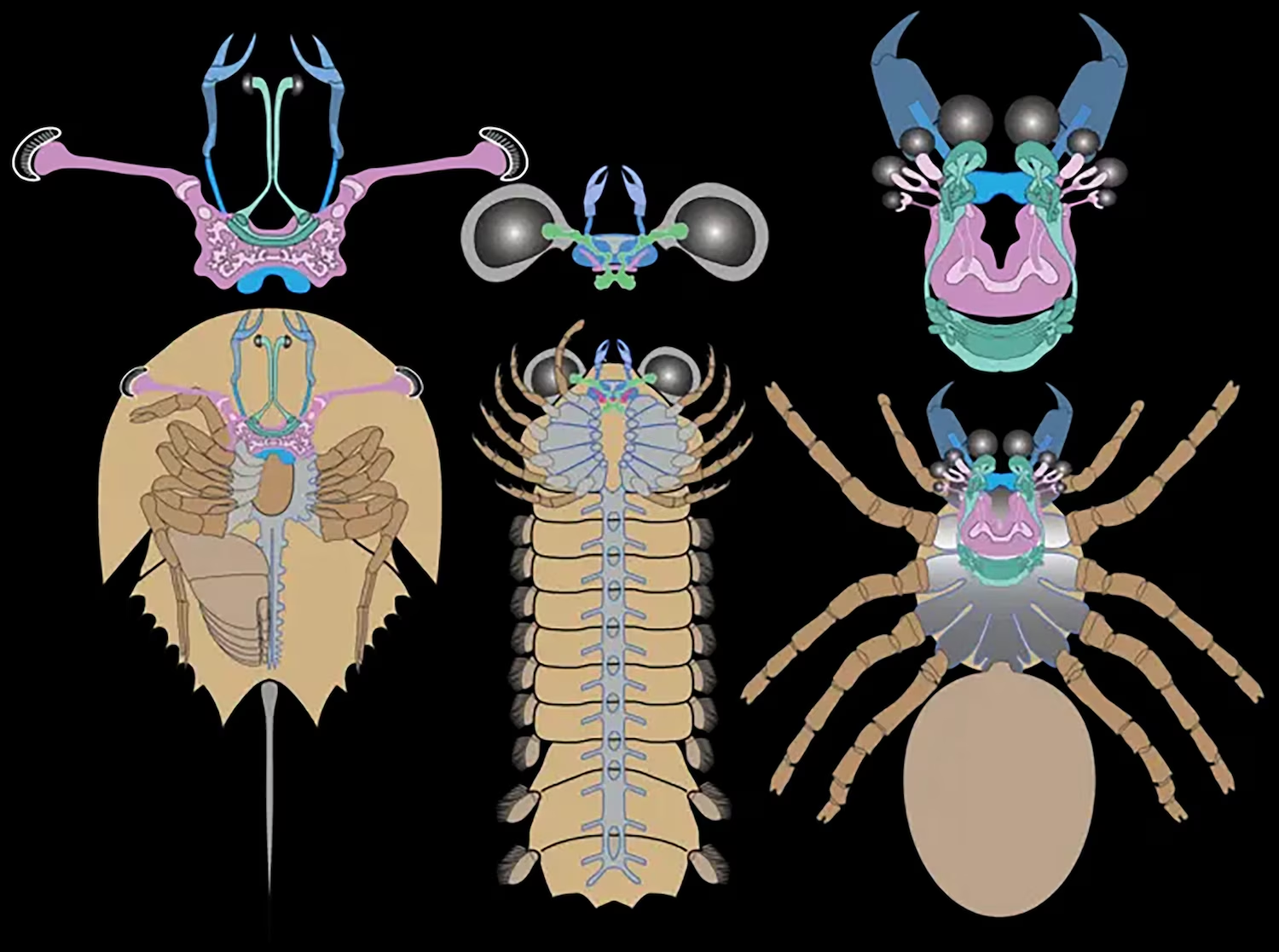
New research suggests spiders and other arachnids may have originated in the sea, based on analysis of a 500-million-year-old fossil.
The "exquisitely preserved" specimen supports the idea that these creatures swam before adapting to life on land, according to a study published Tuesday in Current Biology.
Researchers at the University of Arizona analyzed the fossilized brain of Mollisonia symmetrica, an extinct Cambrian-period species once thought to be an ancestor of horseshoe crabs. However, the study revealed that its neural structure more closely resembles that of modern spiders and their relatives, suggesting a closer evolutionary link to arachnids than previously believed.
The front part of Mollisonia’s body, called the prosoma, has a radiating pattern of nerve clusters that control five pairs of appendages. Additionally, its unsegmented brain sends short nerves to a pair of pincer-like “claws,” resembling the fangs found in spiders and other arachnids.
The key feature identifying the fossil as an early arachnid is its brain’s unique organization, which is the reverse of the front-to-back arrangement seen in modern crustaceans, insects, centipedes and horseshoe crabs, researchers said.
In a statement, Nick Strausfeld, lead author and professor at the University of Arizona, said the fossil’s brain appears "flipped backwards," similar to modern spiders.
This back-to-front brain arrangement may be a key evolutionary adaptation, providing neural shortcuts that enhance movement control.
According to the study, this discovery questions the common belief that diversification happened only after a common ancestor transitioned to land. Earlier fossil evidence suggested that arachnids lived and evolved solely on land.

"It is still vigorously debated where and when arachnids first appeared, and what kind of chelicerates were their ancestors, and whether these were marine or semi-aquatic like horseshoe crabs," Strausfeld said.
As they adapted to life on land, Mollisonia-like arachnids likely fed on early insects and millipedes. These early arachnids may have also influenced the evolution of insect wings, an important defense mechanism.
Researchers say the Mollisonia’s ancestry likely led to spiders, scorpions, sun spiders, vinegaroons and whip scorpions.







